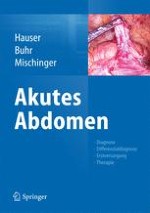Zusammenfassung
Bei der Diagnostik und der Therapie des Lebertraumas kommt es v. a. auf den Verletzungsgrad und die Begleitverletzungen an. Ein Großteil kann heutzutage konservativ behandelt werden, wobei intensivmedizinische Observanz und engmaschiges Monitoring mit Ultrasonographie/Computertomographie unabdingbare Voraussetzungen sind. Ein operatives Vorgehen ist insbesondere bei zunehmender hämodynamischer Instabilität notwendig. In sehr schweren Fällen lassen sich die Überlebensraten durch primäres Packing und Definitivversorgung nach Kreislaufstabilisierung und Gerinnungsoptimierung steigern. Die iatrogene Gallenwegläsion bleibt trotz eines rückläufigen Trends bestimmender Faktor für die Morbidität der laparoskopischen Cholezystektomie. Die Versorgung sollte an spezialisierten hepatobiliären Zentren erfolgen. Vielfach sind jüngere Menschen betroffen, deren Lebensqualität und Lebenserwartung bei nichtadäquater Behandlung durch Langzeitschäden wie Cholangitis und sekundäre biliäre Zirrhose negativ beeinflusst wird. In den meisten Fällen ist die Rekonstruktion mittels Hepatikojejunostomie zu bevorzugen.











